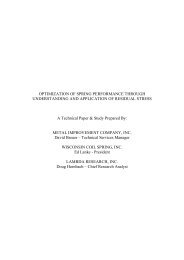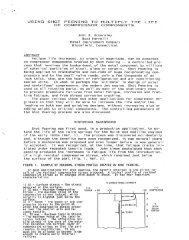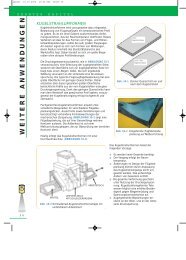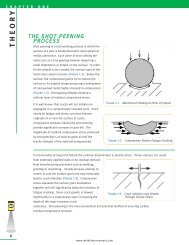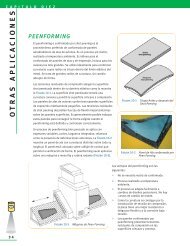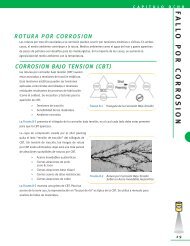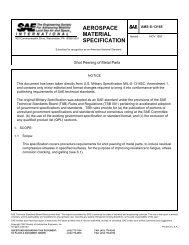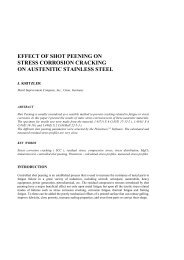MIC Green Book
MIC Green Book
MIC Green Book
Create successful ePaper yourself
Turn your PDF publications into a flip-book with our unique Google optimized e-Paper software.
C H A P T E R E L E V E N<br />
C O NTRO LLING THE PROCESS<br />
42<br />
Almen strips are mounted to Almen blocks and are<br />
processed on a scrap part (Figure 11-6) or similar fixture.<br />
Almen blocks should be mounted in locations where<br />
verification of impact energy is crucial. Actual intensity is<br />
verified and recorded prior to processing the first part. This<br />
verifies the peening machine is set up and running according<br />
to the approved, engineered process. After the production<br />
lot of parts has been processed, intensity verification is<br />
repeated to insure processing parameters have not<br />
changed. For long production runs, intensity verifications<br />
will be performed throughout the processing as required.<br />
Saturation (Intensity Verification) – Initial verification of a<br />
process development requires the establishment of a<br />
saturation curve. Saturation is defined as the earliest point<br />
on the curve where doubling the exposure time produces no<br />
more than a 10% increase in arc height. The saturation curve<br />
is developed by shot peening a series of Almen strips in fixed<br />
machine settings and determining when the doubling occurs.<br />
Figure 11-7 shows that doubling of the time (2T) from the<br />
initial exposure time (T) resulted in less than a 10% increase in<br />
Figure 11-7 Saturation Curve<br />
Almen arc height. This would mean that the process reaches saturation at time = T. Saturation establishes<br />
the actual intensity of the shot stream at a given location for a particular machine setup.<br />
It is important to not confuse saturation with coverage. Coverage is described in the next section and deals<br />
with the percentage of surface area covered with shot peening dimples. Saturation is used to verify the time<br />
to establish intensity. Saturation and coverage will not necessarily occur at the same time interval. This is<br />
because coverage is determined on the actual part surface which can range from relatively soft to extremely<br />
hard. Saturation is determined using Almen strips that are SAE1070 spring steel hardened to 44-50 HRC.<br />
COVERAGE CONTROL<br />
Complete coverage of a shot peened surface is crucial in<br />
performing high quality shot peening. Coverage is the measure<br />
of original surface area that has been obliterated by shot<br />
peening dimples. Coverage should never be less than 100% as<br />
fatigue and stress corrosion cracks can develop in the nonpeened<br />
area that is not encased in residual compressive stress.<br />
The adjacent pictures demonstrate complete and incomplete<br />
coverage. (Figures 11-8a and 11-8b)<br />
If coverage is specified as greater than 100% (i.e. 150%, 200%)<br />
this means that the processing time to achieve 100% has been<br />
increased by that factor. A coverage of 200% time would have<br />
twice the shot peening exposure time as 100% coverage.<br />
www.metalimprovement.com<br />
Figure 11-6 Almen Strip Mounting Fixture<br />
Figure 11-8a Complete Shot<br />
Peening Coverage<br />
Figure 11-8b Incomplete Shot<br />
Peening Coverage



